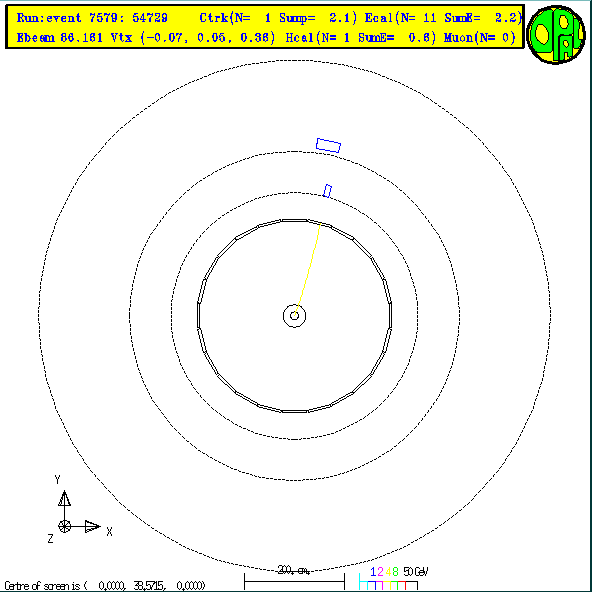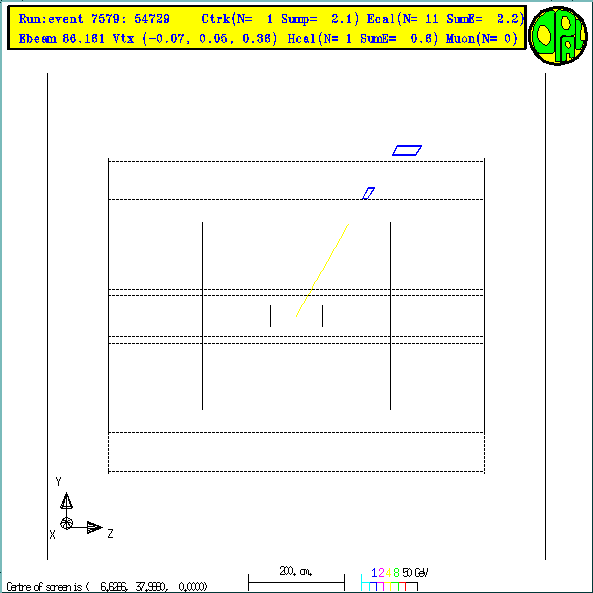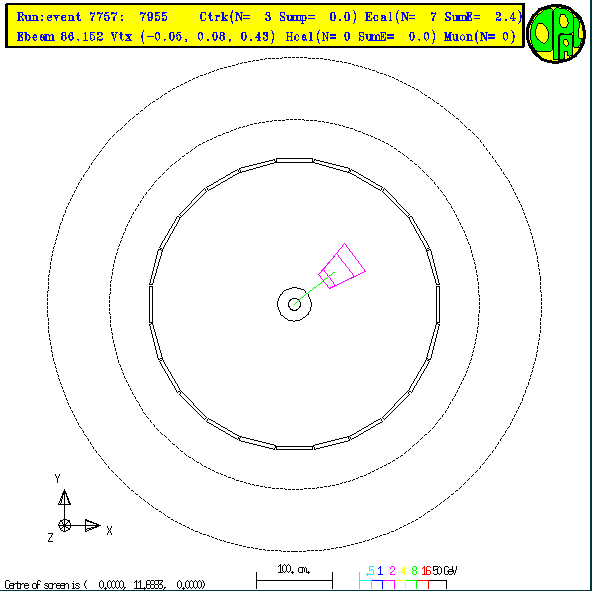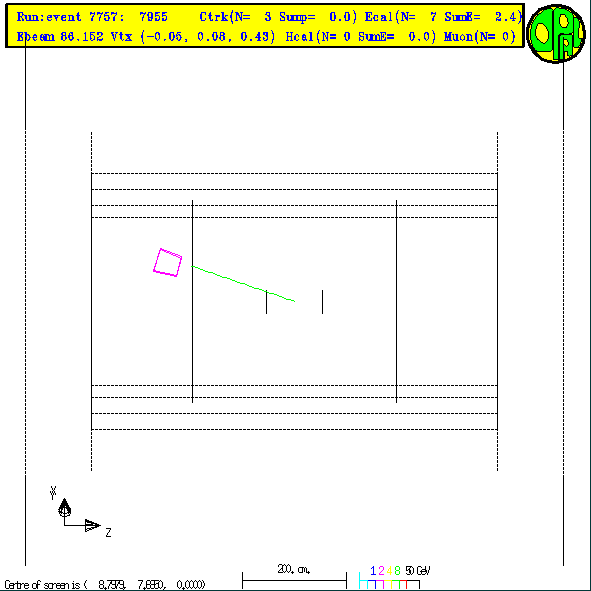Example Events Containing a Hadron
Because of a strange property of the force carried carried by gluons, called confinement, we never see isolated quarks and gluons. Instead they always tend to clump together to form hadrons. Hadrons are not elementary particles; they are particles that are composed of elementary quarks, antiquarks and gluons. It is the hadrons we see in the detector. We can identify the signals produced by hadrons in the following way:
- The momentum of the observed charged particle track is usually larger than the energy observed where it strikes the electromagnetic calorimeter.
- There are no signals produced in the muon chambers.
- Sometimes, but not always, an energy deposit is visible in the hadronic calorimeter.
The signals produced by hadrons are, perhaps, less clear cut that those produced by electrons or muons. However, if you're uncertain just ask yourself the questions: Is this particle an electron? Is this particle an muon? If the answer is no to both of these questions then it's safe to assume it's a hadron!
Here are two example hadrons.
Example Hadron Number 1
End-On View of Event

This hadron satisfies all three of the criteria given above. Please go through the three criteria one by one and verify this for yourself! Click here if you want some help with this.
Side View of Event

Example Hadron Number 2
End-On View of Event

Side View of Event

This hadron satisfies only two of the three of the criteria given above. Make sure you understand which one does it not satisfy? Click here if you want some help with this.